Use Social-Emotional Behavior Assessments to Support Social-Emotional Learning
Discover an efficient, research-proven way to address social-emotional behavioral (SEB) concerns and support social-emotional learning (SEL). Our SEB assessments are backed by over 10 years of collaborations with researchers at top universities nationwide.
Similar to academic assessment, a social-emotional behavior assessment provides insight into the effectiveness of school-wide SEL efforts.
Screen to identify students in need of more intensive supports
Learn more about our Social, Academic, Emotional Behavior Risk Screener (SAEBRS).
Use screening data to select an SEL curriculum that matches students' specific and unique needs
Illuminate Education works with Committee for Children, EmpowerU, and ChooseLove for instruction and intervention resources.
Monitor the progress of students and their response to curriculum and programming
Explore our progress monitoring tool, the Direct Behavior Rating (DBR) measure.
CASEL (Collaborative for Academic, Social, and Emotional Learning) has identified five areas of social-emotional competence that support student learning and development. Discover how our Social, Academic, Emotional Behavior Risk Screener (SAEBRS) helps you measure students’ skill levels with each competency.
Self-Management
Ability to manage one's emotions, thoughts, and behaviors effectively in different situations and to achieve goals.
Self-Awareness
Ability to understand one's emotions and how they influence behavior.
Responsible Decision-Making
Ability to make caring and constructive choices about personal behavior and social interactions across diverse situations.
Relationship Skills
Ability to establish and maintain healthy and supportive relationships with diverse individuals and groups.
Social Awareness
Ability to understand the perspectives of and empathize with others.
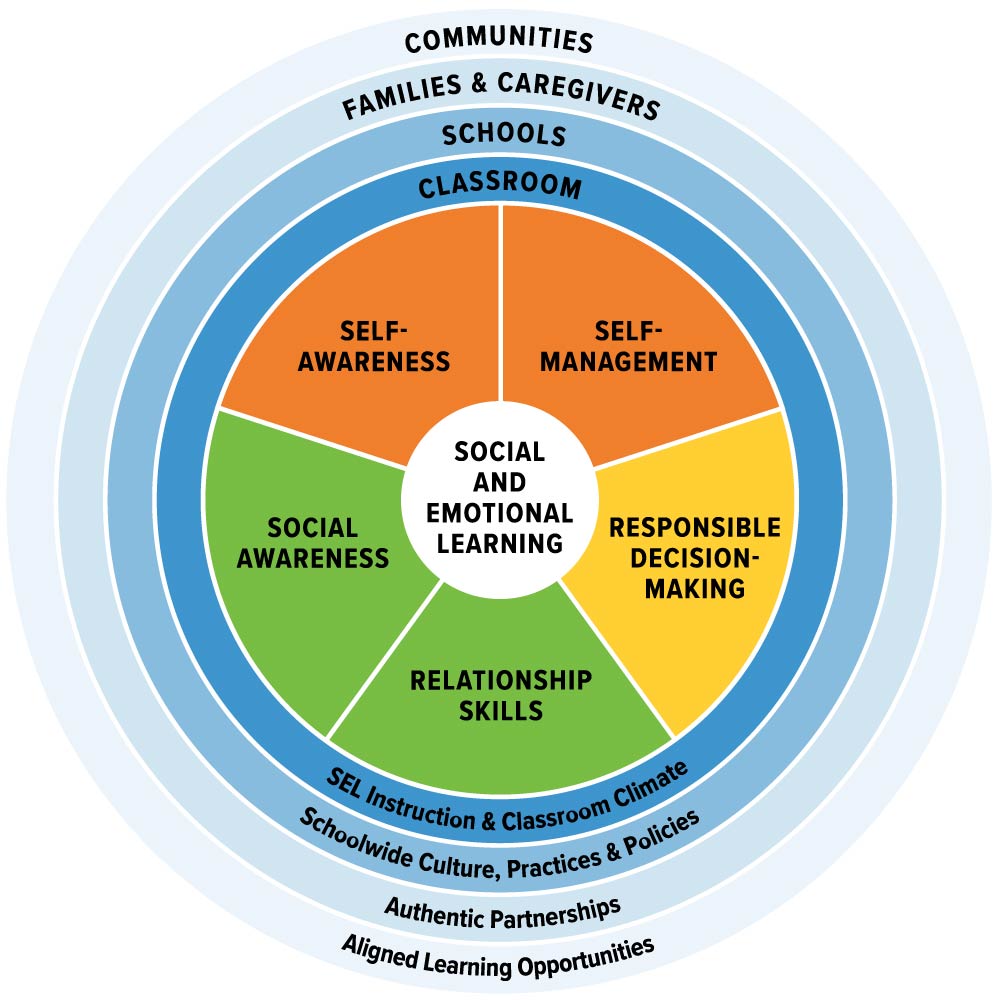


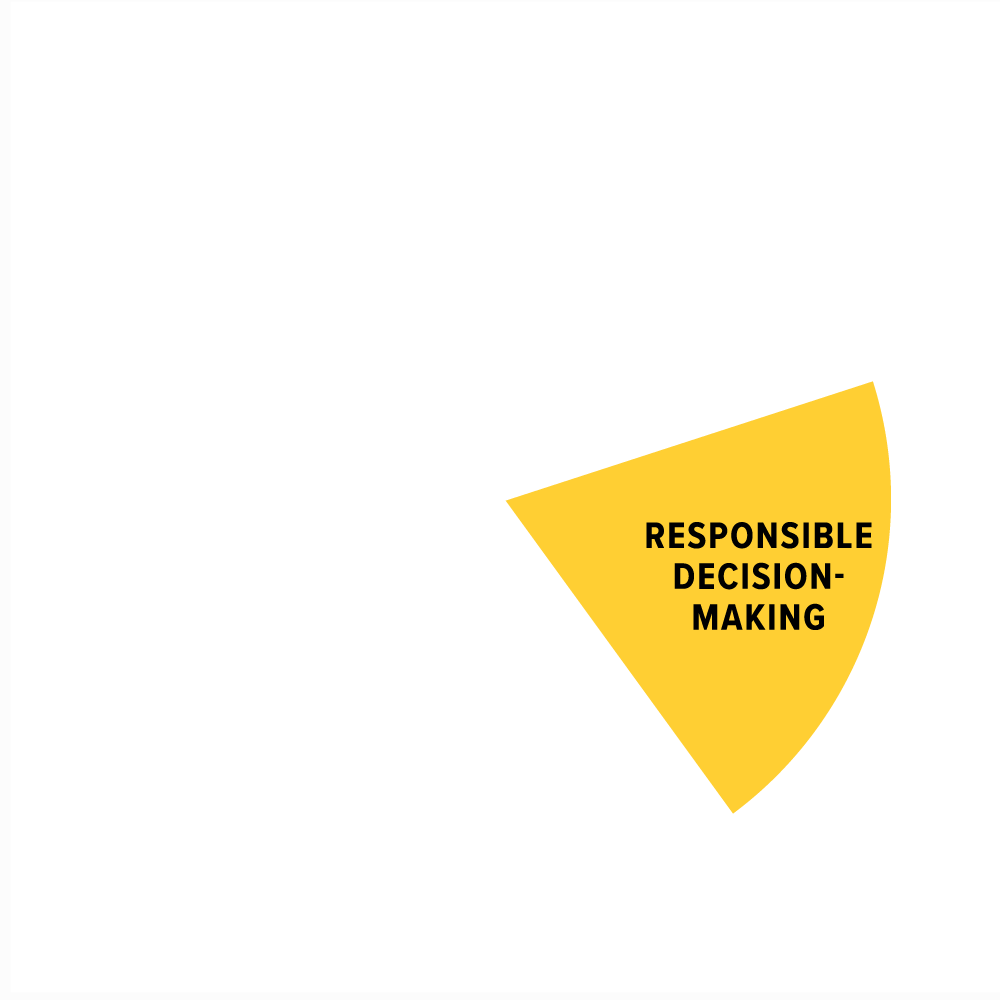
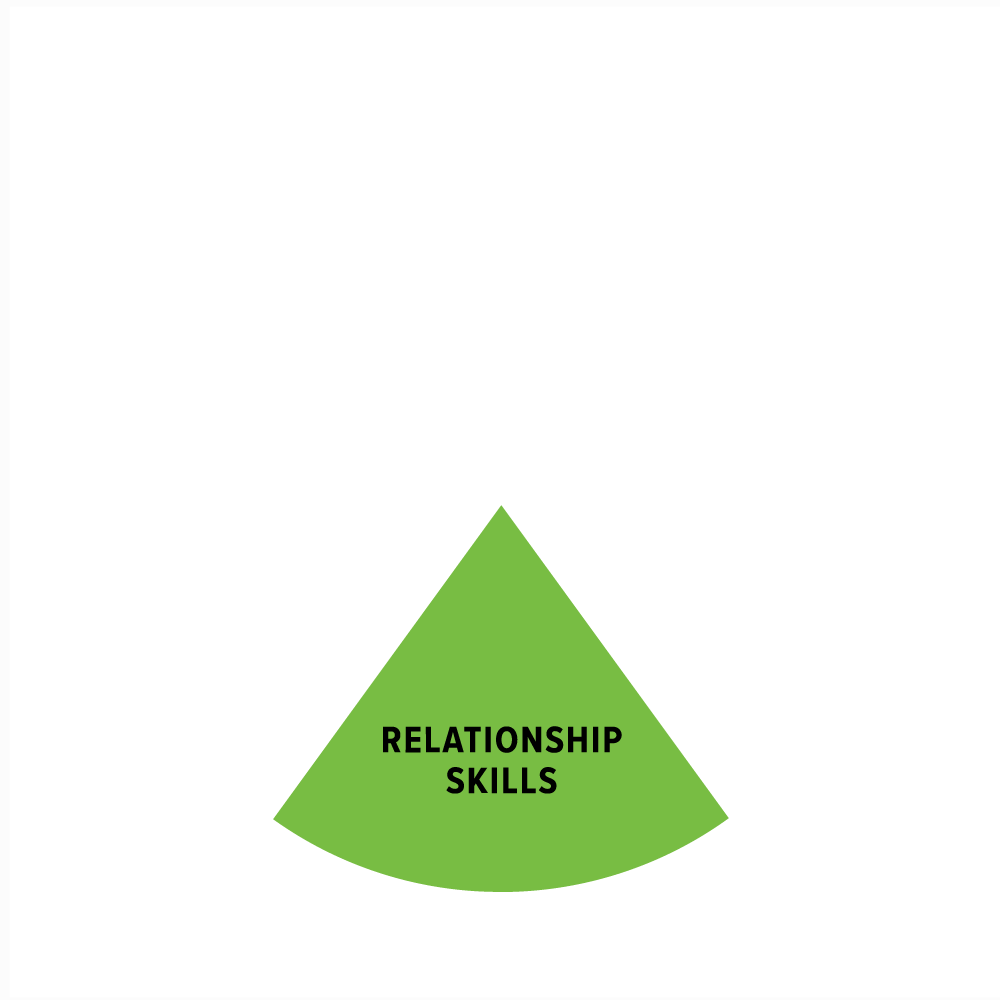

Independently adapted from CASEL's SEL Framework.
©2020 CASEL. All rights reserved. www.casel.org.

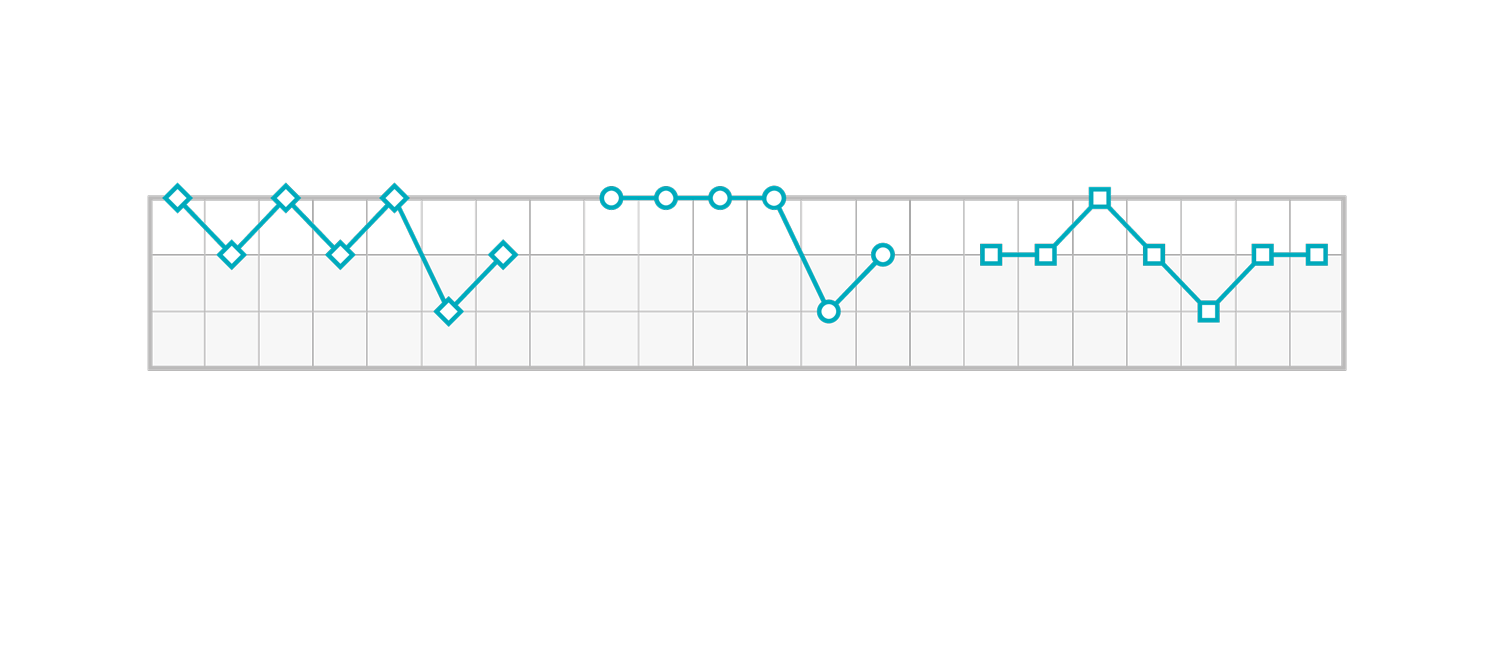








To identify how well developed self-management skills are in students, ask yourself:
Academic Behavior
- How prepared are they for instruction?
- Do they complete their work on time?
- Do they have difficulty working independently?
- Are they organized?
Emotional Behavior
- How well do they adapt to change?
- Do they have difficulty rebounding from setbacks?






To identify how well developed self-awareness skills are in students, ask yourself:
Emotional Behavior
- How well do they adapt to change?
- Do they have difficulty rebounding from setbacks?
- Are they withdrawn or appear worried?
- Do they tend to have a positive attitude?









To identify how well developed responsible decision-making skills are in students, ask yourself:
Academic Behavior
- How prepared are they for instruction?
- Do they complete their work on time?
- Do they have difficulty working independently?
- Are they organized?
Social Behavior
- How well do they cooperate with their peers?
- Do they have trouble controlling their impulses?
- Do they display socially appropriate responses toward others?






To identify how well developed relationship skills are in students, ask yourself:
Social Behavior
- How well do they cooperate with their peers?
- Do they have trouble controlling their impulses?
- Are they argumentative?
- Do they display socially appropriate responses toward others?






To identify how well developed social awareness skills are in students, ask yourself:
Social Behavior
- How well do they cooperate with their peers?
- Do they have trouble controlling their impulses?
- Are they argumentative?
- Do they display socially appropriate responses toward others?
Use Social-Emotional Behavior Assessments to Support Social-Emotional Learning.
SAEBRS
The Social, Academic, and Emotional Behavior Risk Screener (SAEBRS) identifies K-12 students who are at-risk for academic, social, and/or emotional behaviors. SAEBRS can also be used to determine which class, grade, or schools need support to be successful.
Universal Screening
Grades K-12
mySAEBRS
mySAEBRS is the companion to the SAEBRS teacher report. It is a brief and contextually relevant self-rating of student risk for emotional and behavioral problems.
mySAEBRS is available in both English and Spanish.
Universal Screening
Grades 2-12
DevMilestones
DevMilestones is a brief rating scale that tracks student development in key areas of functioning during preschool and kindergarten. It is a criterion-referenced tool designed to evaluate each student’s performance relative to established milestones.
Universal Screening
Grades PreK-K
Direct Behavior Rating (DBR)
DBR is designed to be used as a progress monitoring measure to complement the use of SAEBRS and mySAEBRS screening assessments. With the DBR, educators can easily determine if social, emotional, and behavioral interventions are working.
Progress Monitoring
Grades K-12
The Researchers

Dr. Greg Fabiano
DBR
Professor of Psychology, Florida International University

Dr. Leanne Johnson
DevMilestones
Associate Professor of Educational Psychology, University of Minnesota

Dr. Stephen Kilgus
SAEBRS/mySAEBRS & DBR
Associate Professor of School Psychology, University of Wisconsin-Madison

Dr. Nathaniel von der Embse
SAEBRS/mySAEBRS & DBR
Associate Professor of School Psychology, University of South Florida
FastBridge offers specific tools, strategies, and modifications for educators to use to promote social emotional learning in the social, academic, and emotional domains. These approaches are based on considerable research in schools and have been evaluated by educators as feasible for everyday use.
Social
Includes tools and strategies to improve classwide and individual student behavior to promote a positive environment for learning and interaction.
Academic
Includes tools and strategies to help students classwide and individually be productive and efficient in learning situations.
Emotional
Includes tools and strategies to help students self-monitor, self-manage, and move toward positive growth in their modulation of feelings and associated thoughts and behaviors.
Pair SEB Assessments with SEL Instruction
Illuminate works with the following organizations to provide districts with proven SEL curricula options that can be used in conjunction with our social-emotional behavior assessments to increase the effectiveness of school-wide social-emotional learning efforts.

Committee for Children offers research-based SEL materials with their curricular solution SecondStep to help address the “now what?” needs of students.

EmpowerU provides schools with a highly personalized, online SEL program that helps young people replace anxiety and depression with resilience and confidence, fueling student transformation.

ChooseLove (a 501(c)(3) nonprofit organization) offers a program to create safer and more loving communities through groundbreaking SEL programs that are free of cost and suited for all stages of life.

Move This World's multimedia curriculum supports and strengthens students through instruction aligned with CASEL's five core competencies.
eBook

Using Social-Emotional Behavior Assessments to Support Student Success
Get insight into using SEB assessments alongside academic assessment within MTSS to pinpoint whether students need academic or SEB interventions—or both.
Infographic
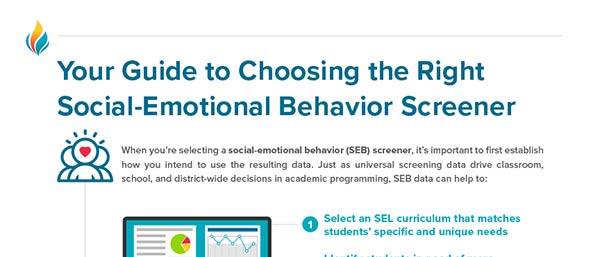
Your Guide to Choosing the Right Social-Emotional Behavior Assessment
Ensure you’re selecting the right SEB screener to deliver the data you need using these 11 critical criteria.
ALIGNMENT GUIDE

Supporting Social-Emotional Behavior Skill Development: Using SAEBRS Assessments & Second Step® Programs Together
Learn how to use Second Step programs in tandem with the SAEBRS assessment suite to bolster SEL supports and effectively allocate key SEL resources in your school or district.
Social-emotional behavior data was the missing piece of the puzzle at Clarksville-Montgomery County School System. See how CMCSS uses social-emotional behavior assessment to plan more effective academic supports.
Most school districts don’t have the expertise to judge the evidence for the assessment tool they use to evaluate students. The technical (e.g., psychometric) properties of an assessment are directly related to the usefulness of the data, and defensibility of the decisions derived from said data. For this reason, it is important to use research-based social-emotional behavior assessments that have undergone a third-party review process. A strong research-based social-emotional behavior assessment should be shown to be effective in two or more research studies with different groups and settings of students. It should also have evidence that the resulting data led to meaningful and effective interventions.
FastBridge’s SEB assessment is the only universal screener that has been demonstrated to meet the psychometric criteria established by the National Center on Intensive Intervention for convincing evidence of reliability, validity, and diagnostic accuracy. Additionally, studies have shown that results from the FastBridge SEB assessment lead to more equitable access to critical mental health services and help reduce disproportionality—specifically when compared to office discipline referrals. Notably, SAEBRS and mySAEBRS include items related to academic behaviors as well as internalizing and externalizing behaviors which are all important components of school success.
How frequently social-emotional behavior assessments should be given depends on what the overall purpose is for collecting data. If the goal is to learn how well school-wide behavior instruction is working then social-emotional behavior assessments designed for universal screening should be administered three times a year. If the objective is to understand if an individual student is making progress towards goals (e.g., reducing the number of problem behavior instances), then social-emotional behavior assessments designed for progress monitoring can be used multiple times a week.
While there are no official qualifications required to administer most social-emotional behavior screening assessments, Illuminate Education has developed training to inform educators of the purpose of screening assessments, give explicit instructions on how to administer and complete the assessments, and provide guidance for using social-emotional behavior assessment data to inform interventions and program evaluation. All rating scales—regardless of psychometric evidence—are subject to teachers’ bias especially without high-quality training. We strongly encourage additional professional learning that will prepare teachers to use such rating scales with integrity and accuracy.

